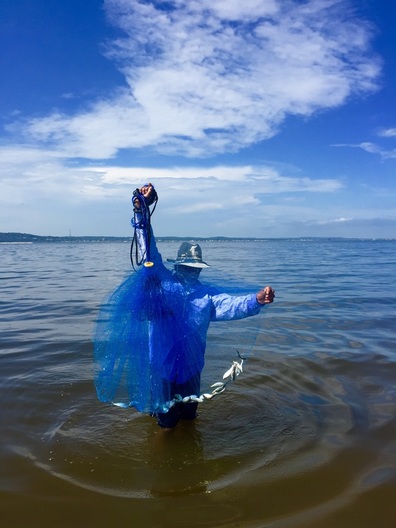The American Littoral Society has been fighting to defend the public's right to access beaches, the sea and coastal habitats since its earliest days and continues to do so every day.
|
The ancient laws of the Roman Emperor Justinian held that the sea, the shores of the sea, the air and running water was common to everyone.
The seashore, later defined as waters affected by the ebb and flow of the tides, could not be appropriated for private use and was open to all. These same rights, now known as the Public Trust Doctrine, are part of United States common law. The American Littoral Society has been fighting to defend the public's right to access coastal areas since its earliest days and constantly protects those rights from threats. The society works continuously to enhance access to the coast for everyone, and fights privatization or any other attempts to undermine any aspect of the Public Trust Doctrine. |
ISSUES
Nearly 40 percent of the US population lives within 37 miles of the coast which places a enormous burden on the coastal environment. Millions of other citizens visit the coast on vacation, for work or recreation. The society vigilantly reviews major coastal development proposals, monitors coastal public access requirements to ensure they are implemented, and pursues policies that increases the quality and quantity of access for everyone
Our Position
Public access to tidal areas is not only a right of all citizens, but an important underpinning of coastal economies. In New Jersey, the vast majority of residents and visitors to the Shore use public access to enjoy the waters and beaches of the state, and through their presence contribute to the billion dollar tourism economy.
However, there are significant stretches of the coast which are access limited, diminishing the ability of fishermen, surfers and families to use the public trust resources in a meaningful way.
Limitations include: no direct physical access to the waterfront, beach or tidal waters; no parking in proximity to the access points; and a lack of support facilities near those access points.
Our goal is to: always make currently inaccessible parts of the coast usable and welcoming; expand access to the water within our urban communities; promote equal enjoyment and access to the public trust resources; and to achieve a better balance between the public's rights to the coast and private desires to use it for housing and other development.
However, there are significant stretches of the coast which are access limited, diminishing the ability of fishermen, surfers and families to use the public trust resources in a meaningful way.
Limitations include: no direct physical access to the waterfront, beach or tidal waters; no parking in proximity to the access points; and a lack of support facilities near those access points.
Our goal is to: always make currently inaccessible parts of the coast usable and welcoming; expand access to the water within our urban communities; promote equal enjoyment and access to the public trust resources; and to achieve a better balance between the public's rights to the coast and private desires to use it for housing and other development.
What You Can Do
Ensuring broad access to the coast requires constant vigilance. The society carefully monitors challenges to public access, but our members and the general public are our eyes and ears. Efforts to reduce access to the coast are often hard to perceive until it is too late. Therefore the public's vigilance is often necessary to protect all access to the coast. To alert the society to any threats to public access please email [email protected]
You can also support our efforts to keep the coast accessible to everyone by joining the society as a member. By joining, your member dollars help support our efforts to maintain the Public Trust.
You can also support our efforts to keep the coast accessible to everyone by joining the society as a member. By joining, your member dollars help support our efforts to maintain the Public Trust.



